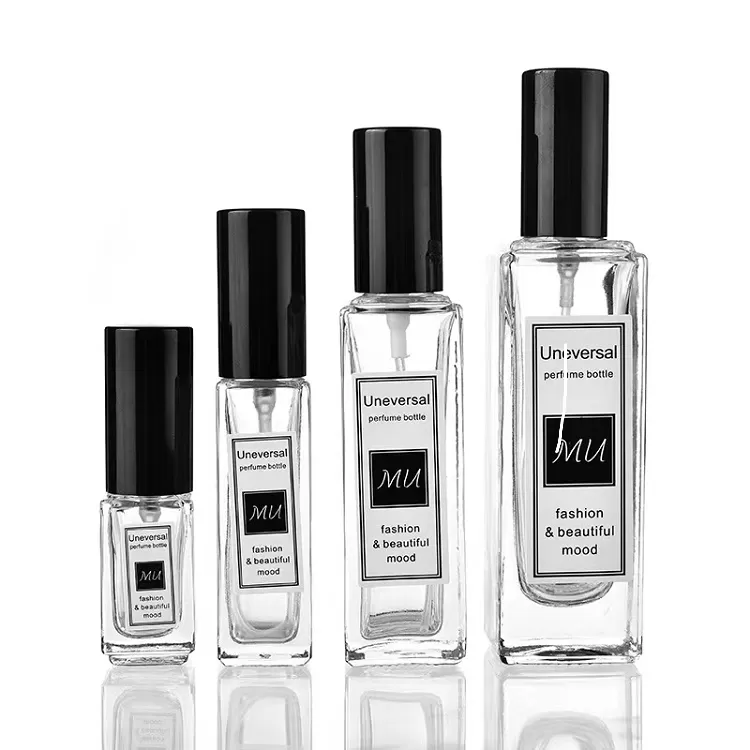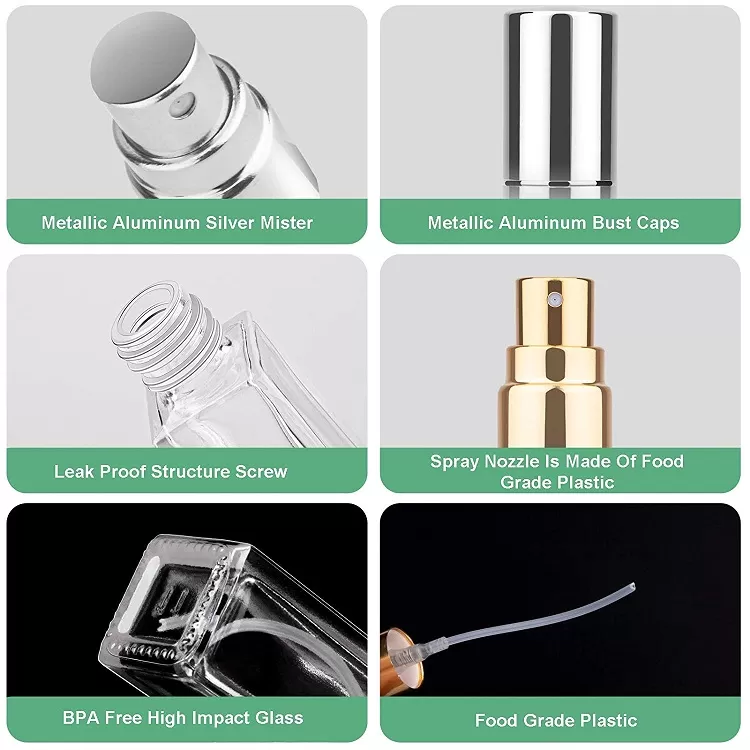The Ultimate Guide to Perfume Packaging: Design, Branding, and Marketing Strategies
03-08-2025
This comprehensive guide dives into the intricate world of perfume packaging, providing invaluable insights into design, branding, and marketing strategies. Whether you're launching a new fragrance brand or revamping an existing one, this article is worth reading because it offers a practical, step-by-step approach to creating perfume packaging that not only protects the product but also captivates customers and drives sales. We'll explore how to align your packaging with your brand identity, appeal to your target audience, and leverage current market trends, including the growing demand for sustainability. Learn from industry experience, with specific advice tailored for businesses sourcing from manufacturers like those in China.
What is the Importance of Perfume Packaging?
Perfume packaging is far more than just a container; it's the first physical interaction a customer has with your fragrance brand. It plays a crucial role in shaping perceptions, conveying brand values, and influencing purchasing decisions. Think of it as the silent salesperson for your perfume. The packaging must immediately communicate luxury, sophistication, or whatever essence your perfume embodies.
The perfume industry is highly competitive, with countless fragrances vying for attention. Appealing packaging is a critical differentiator. It's what makes a customer reach for your bottle on a crowded shelf. Beyond aesthetics, the packaging must also protect the delicate fragrance from light, heat, and air, preserving its quality and longevity. For example, amber glass bottles are frequently used to shield light-sensitive perfumes.
How Does Packaging Design Influence Brand Image?
Packaging design is an integral component of your brand image. It's a visual representation of your brand identity and should reflect your brand values and aesthetics. Everything from the shape of the perfume bottle to the color palette, typography, and materials used contributes to the overall message. A minimalist design might convey simplicity and elegance, while an ornate design might suggest opulence and luxury.
Consider the design elements carefully. Are you aiming for a classic, timeless look, or a modern, edgy feel? Does the box design complement the bottle itself? Remember, consistency is key. All aspects of your packaging should work together harmoniously to create a cohesive and memorable brand experience. For instance, a brand known for its natural ingredients may opt for earth tones and eco-friendly packaging materials.
Who is Your Target Audience for Perfume?
Understanding your target audience is paramount to creating effective packaging. Market research is essential to identify the demographics, preferences, and buying behaviors of your potential customers. Are you targeting a younger demographic who might be drawn to bold colors and unconventional shapes? Or are you catering to a more mature audience who might prefer classic elegance and understated designs?
Knowing your target market also allows you to tailor your marketing strategies more effectively. For instance, if your target audience is environmentally conscious, highlighting your commitment to sustainability in your packaging and marketing campaign can be a powerful selling point. You can source glass bottles like this 30ml Hemp Oil Dropper Glass Bottle that has options for recycled content.

What are the Current Packaging Design Trends in the Fragrance Market?
Staying abreast of packaging design trends in the fragrance market is crucial for maintaining a competitive edge. Currently, there's a strong emphasis on:
- Minimalism: Clean lines, simple typography, and uncluttered designs are trending.
- Sustainability: The demand for eco-friendly packaging solutions is rapidly growing. Consumers are increasingly seeking brands that prioritize sustainable packaging options like recyclable or biodegradable materials.
- Personalization: Custom packaging and customized perfume options are gaining popularity, allowing consumers to feel a stronger connection to the brand.
- Vintage-Inspired Designs: Nostalgia is a powerful force, and vintage-inspired packaging is making a comeback.
- Bold Colors and Patterns: While minimalism is popular, there's also a trend towards using vibrant colors and eye-catching patterns to stand out.
Incorporating these trends, where appropriate, can help your perfume packaging feel current and relevant.
How to Choose the Right Packaging Materials?
The choice of packaging materials is critical for both aesthetic and functional reasons. Glass is the most common material for perfume bottles due to its inert nature, which preserves the fragrance, and its ability to be molded into various shapes. The quality of the glass is paramount; high-quality glass, as offered by GLT Glass Bottle, is essential for a premium feel.
Beyond the bottle itself, consider the materials for the outer packaging, such as the box. Cardboard is a common choice, but consider using recycled or sustainably sourced cardboard to align with environmentally conscious values. Other options include:
- Specialty Papers: Textured or embossed papers can add a touch of luxury.
- Metal Accents: Metal caps, collars, or embellishments can elevate the perceived value.
- Sustainable Alternatives: Explore options like mushroom packaging or plantable seed paper.
Can Sustainability Be Integrated into Perfume Packaging?
Absolutely! Sustainability is no longer a niche trend; it's a core value for many consumers. Integrating sustainable practices into your perfume packaging can significantly enhance your brand image and appeal to a wider audience. Consider these options:
- Recyclable Materials: Use glass, which is infinitely recyclable, and choose cardboard with a high recycled content. Recyclable packaging is a simple way to make a difference.
- Reduced Packaging: Minimize the amount of packaging used. Can you eliminate unnecessary layers or inserts?
- Refillable Bottles: Offer refill options to reduce waste and encourage brand loyalty.
- Biodegradable Materials: Explore biodegradable alternatives to traditional plastics.
- Reusable Packaging: Design the packaging with materials and designs that allow for secondary use. For example, beautiful glass jars, like this 150ml Round&Square Kinler Weed Glass Jar, can be repurposed.

How to Develop a Comprehensive Marketing Plan for Your Perfume Brand?
A comprehensive marketing plan is essential for launching and promoting your perfume brand. This plan should encompass:
- Market Research: Thoroughly understand your target audience, competitors, and market trends.
- Brand Positioning: Define your brand's unique selling proposition (USP) and how you want to be perceived.
- Messaging: Craft a compelling brand message that resonates with your target market.
- Marketing Channels: Identify the most effective marketing channels to reach your audience (see next section).
- Budget: Allocate a realistic budget for your marketing efforts.
- Metrics: Establish key performance indicators (KPIs) to track the success of your marketing campaign.
What Marketing Channels are Most Effective for Perfume Products?
Choosing the right marketing channels is crucial for reaching your target audience. For perfume products, consider these options:
- Social Media Marketing: Platforms like Instagram and Pinterest are highly visual and ideal for showcasing the aesthetic appeal of your perfume and its packaging.
- Influencer Marketing: Partnering with beauty and fragrance influencers can significantly increase brand visibility and reach.
- Content Marketing: Create valuable content, such as blog posts or videos, about perfume, fragrance notes, or the inspiration behind your brand.
- Email Marketing: Build an email list and send out newsletters with promotions, new product announcements, or behind-the-scenes content.
- Online Advertising: Utilize targeted advertising on platforms like Google Ads and social media to reach potential customers.
- Public Relations: Secure media coverage in relevant publications or blogs.
- Exhibitions:Participating in trade shows, like Mark Thompson often does, provides direct access to buyers and industry professionals. This offers a tangible way to showcase your product and brand.
- Sampling: Offer samples.
How to Ensure Quality Inspection and Compliance for Packaging Sourced from China?
When sourcing packaging from China, as Mark Thompson does, quality inspection and compliance are paramount. Here's how to address Mark's key concerns:
- Thorough Vetting of Suppliers: Don't solely rely on online listings. Conduct thorough background checks, request samples, and ideally, visit the factory (or hire a trusted third-party inspector). GLT Glass Bottle, with its 7 production lines, is a factory directly offering B2B packaging solutions.
- Detailed Specifications: Provide incredibly detailed specifications for your packaging needs, including materials, dimensions, colors, printing techniques, and any special finishes.
- Quality Control Checkpoints: Implement quality control checkpoints throughout the design process and production. This should include pre-production samples, in-process inspections, and final pre-shipment inspections.
- Certifications: Insist on relevant certifications, such as FDA compliance for food-contact materials (if applicable), and verify their authenticity.
- Contractual Agreements: Have a clear and legally sound contract that outlines quality standards, inspection procedures, and remedies for non-compliance. Specify accepted payment methods and logistics arrangements.
- Independent Testing: You may request independent laboratory testing.
How Can Effective Communication with Suppliers Overcome Purchasing Pain Points?
Mark's pain points – inefficient communication, shipment delays, and certificate fraud – are common challenges when sourcing internationally. Here's how to mitigate them:
- Clear and Concise Communication: Use simple, straightforward language, avoiding jargon. Utilize visuals (diagrams, photos) to illustrate your requirements. Confirm understanding at every stage.
- Regular Updates: Establish a regular communication schedule with your supplier. Proactively request updates on production progress and shipping timelines.
- Use Project Management Tools: Consider using project management tools to track milestones, deadlines, and communication.
- Build a Relationship: Cultivate a strong working relationship with your supplier. This can lead to better communication, preferential treatment, and proactive problem-solving. Allen, from GLT Glass Bottle, values building such relationships.
- Address Delays Proactively: Discuss potential delays upfront and establish contingency plans. Have a buffer in your timeline to accommodate unforeseen issues.
- Verify Documents: Use official channels to validate documents.
Summary of Key Points:
- Perfume packaging is a critical marketing tool and brand differentiator.
- Design should align with your brand identity and target audience.
- Sustainability is a growing consumer demand; incorporate eco-friendly practices.
- Develop a comprehensive marketing plan utilizing various online and offline channels.
- When sourcing from China, prioritize quality control, clear communication, and thorough supplier vetting.
- Choose a supplier like Glint who prioritizes transparency, quality, and customer relationship.
- Make sure your packaging is user-friendly. A visually appealing perfume bottle that’s impossible to open is just bad design.
- Keep in mind that the packaging and product must work together as a whole. Ensure the scent matches with the overall design.
- Utilize different marketing techniques. Don’t simply stick to one, explore different methods and see which marketing techniques work best.
- Remember that your branding extends past your product. Your customer service, social media content, etc. all contribute to your brand image.
By following this guide, you can create perfume packaging that not only protects your fragrance but also elevates your brand, attracts customers, and ultimately drives sales. Remember, the packaging is often the first impression, so make it count!








